If you've never remodeled a kitchen, you might not consider the importance of appliance placement. Where each one is installed is important, not just for maximizing the space but also for safety. As you narrow down possible new floor plans for your kitchen, you'll want to pay particular attention to the range's placement, especially if you plan on installing it near a wall. Just how much space should be between the range and wall? To help you determine where to place the range in your kitchen, we've researched spacing.
There should be two inches of space between the back wall and a drop-in or slide-in (gas or electric) style range. A freestanding range (gas or electric) requires no space between it and the back wall. There should be at least twelve inches between any style range and the closest sidewall.
There are still a few additional factors to consider regarding spacing between the kitchen range and adjacent walls. We've researched different styles of ranges from multiple professional sources and compiled our findings throughout this post. You might also be wondering if you can place a range next to a refrigerator or if it's safe to place a range near a microwave. For the answers to these questions and more, please read ahead!
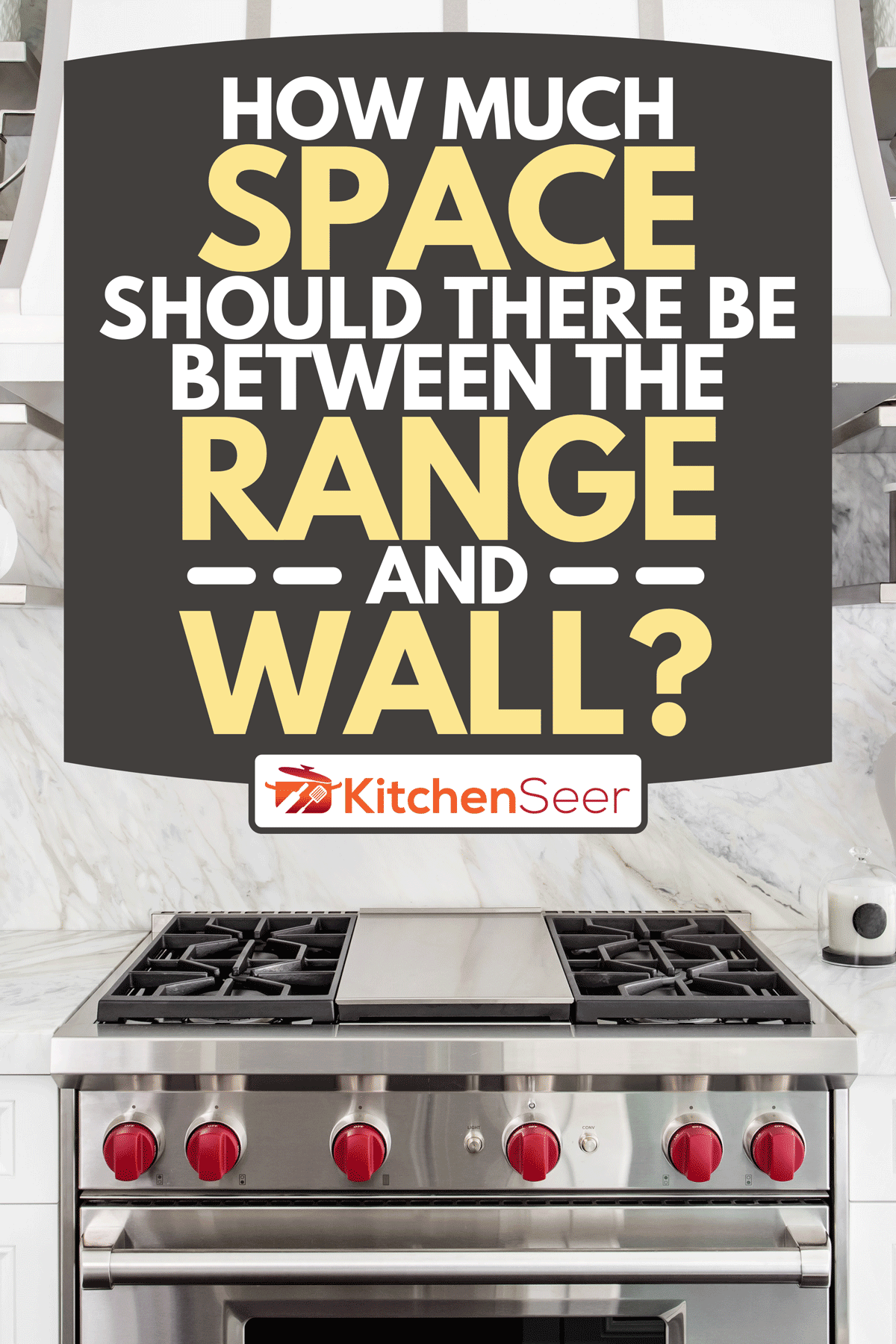
Important considerations for range placement
When you're remodeling the kitchen, you'll want to take note that there are several important items to consider regarding your appliances and the walls nearest them. When it comes to a range, this gets a little more tricky.
Back wall gap
If the range is a slide-in gas model, a gap is necessary to provide adequate spacing for the gas line. The line will come through the floor (in some cases, the wall) and attach to the back of the range. The connector on the back of the range protrudes a bit, making a two-inch gap necessary to use the connector safely. Slide-in and drop-in electric ranges still need a two-inch gap between the appliance and the rear wall. While you won't have a gas line connector to worry about in this case, the gap provides essential ventilation.
Should you have a freestanding gas or electric range, you should have them pressed as close to the wall as possible. There is no need for spacing, as these are better at ventilating heat and do not have protruding gas line connectors. The back of these ranges has power cords installed so that they can be plugged into a wall socket without having a gap between it and the rear wall.
Sidewall gap
As we pointed out earlier in this post, the distance between your range and the nearest sidewall should be twelve inches at a minimum, no matter the style of range you're having installed. This has to do with the heat coming from the cooktop. Gas range flames or intense heat from electric coils can pose some serious danger if they are close to a wall.
Additionally, you want this space so that you don't have grease splashing onto the sidewall. The extra space will also allow for more prep area and more spots to store cooking utensils.
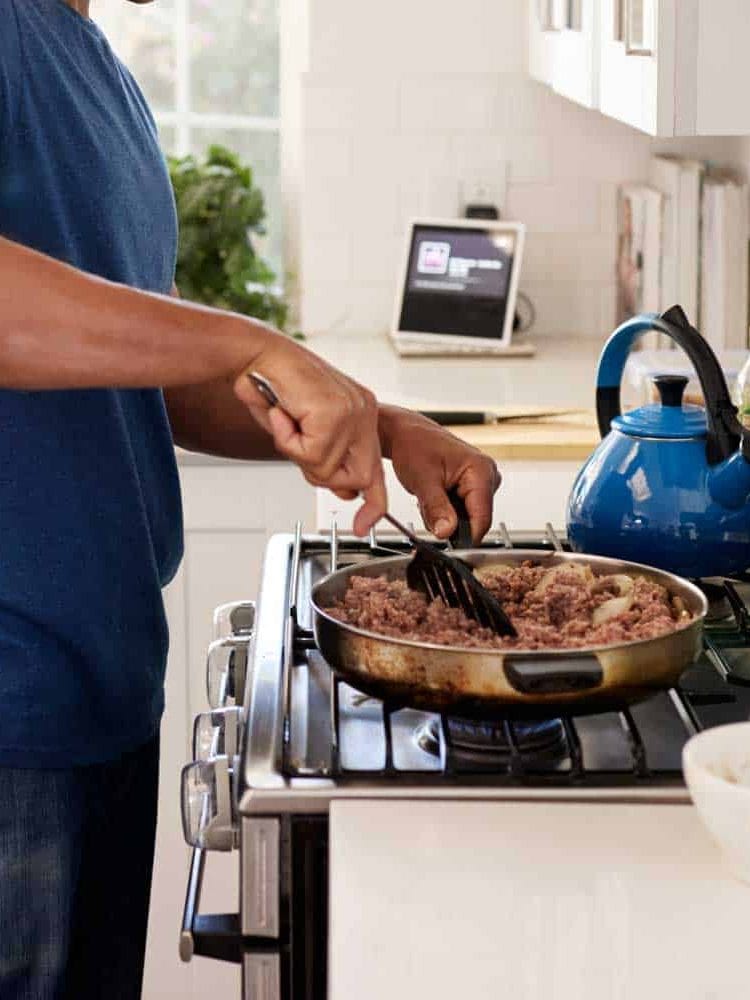
Where do you start a backsplash?
Selecting a slide-in or drop-in range means you'll be without a back guard on the appliance, unlike freestanding models. This missing piece means that you'll need to have some way of keeping grease from splattering on the kitchen wall behind the range. This is where a backsplash comes into play. Made from grouted tile, this handy addition is easy to install and even easier to clean.
The best place to begin your backsplash is just above the top of the counter. The backsplash should run evenly across the countertop, including the area behind the range where there is a gap between it and the wall. No matter what quality tile you use for your backsplash, it's important to clean it regularly to prevent grease buildup.

How do I fill the gap between my stove and cabinets?
No matter how snug your stove fits in between your cabinets, there's always enough space in between it and the countertops for crumbs and spilled liquids to seep through. How do you solve this issue? Thankfully, there are gap fillers made just for this problem. They are usually made from silicone or stainless steel and are relatively inexpensive and easy to install.
Having one on either side of your freestanding range will save you the trouble of having to remove the range from its place so you can deep clean after spills.
Can I put a range next to a refrigerator?
Even in the most cramped kitchens, allowances need to be made for the space between appliances. Proper spacing is not just for convenience but for safety reasons. When it comes to your range, we discussed earlier that you need at least twelve inches between it and the wall. When it comes to the minimum space between your range and your refrigerator, a little more room is required.
Experts say that you'll want a minimum of fifteen inches between these two appliances. This room will ensure that the cooktop's heat won't damage the refrigerator's sidewalls and keep it free of grease splattering.
Can I put a range next to a microwave?
For the sake of convenience, it's great to have your microwave and range near one another while you cook. It makes the kitchen flow better and also makes for a more uniform look. But how close is too close? In this section of the post, we'll look at the recommended safe distances between your range and your microwave.
Over-the-Range Microwaves
Most professional sources recommend that you should have a minimum of sixty-six inches from the ground to the microwave's base if it's installed above the cooktop. This height makes the appliance easy to reach for most people. Depending on the microwave model, the space between its base and the top of your range will need to be between thirteen and eighteen inches. Why the difference?
Some models are made more durable than others and can withstand intense heat for longer periods of time. But don't just guess the amount of space your model can endure. To ensure that you are allowing for enough room, read the owner’s manual for both your stove and your microwave.
Freestanding Microwaves
Freestanding or countertop microwaves need more space between them and the range. These appliances are not made with durable enough materials to withstand as much heat as the over-the-range models. Heat from a nearby gas flame or from the coils on an electric range will damage this type of microwave. It's strongly recommended that you keep this appliance a minimum of two feet from the closest edge of your range.
In conclusion
Knowing the proper amount of space to maintain between your range and the wall is important for several reasons, with safety being the primary concern. The recommended minimum space differs depending on range style, so it's important to consult your owner's manual to get the exact number. Backsplashes are needed if you are installing a drop-in or slide-in range against a back wall. Constructing a tile backsplash is easy and simple to clean and maintain.
As with proper spacing between ranges and walls, you need to be certain that your range isn't too close to other appliances. A cooktop that is too close to a microwave or refrigerator can potentially damage these appliances, as well as pose a fire hazard to your kitchen. As always, you should carefully consult your owner's manual of your appliance prior to installation.
If you found this post on kitchen ranges to be helpful, we believe you will find the following posts on kitchen appliances informative:
Can a Toaster Oven Replace A Microwave?
How Long Does A Dishwasher Run?
Best Refrigerator Brands On The Market
How Wide Is A Standard Dishwasher?
Does A Wok Work On An Electric Stove?






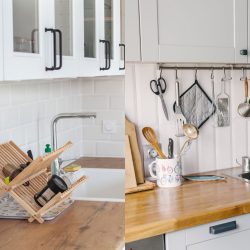
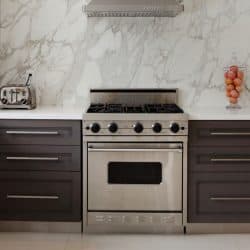

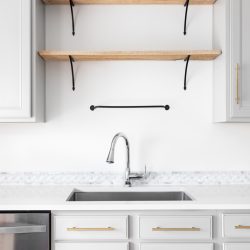
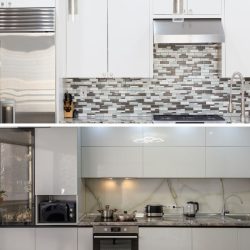
How far above the stove should the hood be?
Thank you